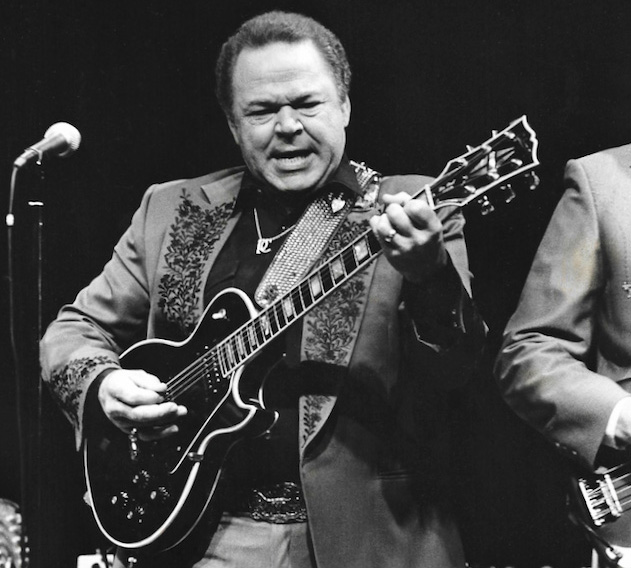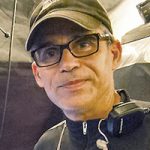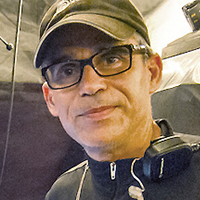In the early 1980s I was working at a sound and lighting company in Toronto when I was tapped to do a gig with popular country artist Roy Clark. At the time, I wasn’t far enough up the food chain to know where these jobs came from, I was just told, “Go here, do this gig” – so I don’t know any of those details. What I do remember is that the show was in Sarnia, Ontario, about a four hour drive southwest of Toronto, which meant we had to leave the evening before to make an 8 am load in.
Accordingly, we prepped and loaded the PA, joined by a lighting rig, into a rented tandem axel straight truck, and freelancer Bob Rodgers (who was serving as the monitor engineer) and I drove out to Sarnia. For whatever reason, our lighting designer, Jan Elliot, and her assistant were going to be joining us on the morning of (probably to save the cost of a hotel room).
In any case we all piled into the venue (a hockey arena) the next morning and proceeded to set up. This was interesting because the stage – a plywood and 2 x 4 custom build – was really, really high, possibly to clear the entrance for the Zamboni ice-resurfacing machine located at the same end of the arena. What this meant is that it turned out to be absolutely impossible to place the monitor console anywhere offstage, and since the stage had no sound wings, it meant that the monitor position would be in full view of the audience.
We decided, in consultation with the band’s road manager, that the best way to approach this was to go “loud and proud” and just set up the Bob’s position onstage as though he was a member of the band, like another keyboard player. This ended up being far upstage right, on the back of the riser that the three back-up singers were on.
Getting It Set
Another unique thing about this gig was that Roy’s front of house mixer was a woman, Cathy Bush by name. This wasn’t a big deal to me because I had several tech friends in the business who were women, but it was uncommon at the time. When I mentioned Cathy on the ProSoundWeb LAB Forum after Roy Clark passed last year, moderator Tim McCulloch had this to say: “I remember Cathy! Met her closer to 1990 than 1980 and not certain it was with Roy Clark. I recall a great mix without the drama some of the male BEs brought to FOH…” which perfectly sums up my recollection of working with her.
While I was getting Cathy set at FOH, I became dimly aware that something was amiss over on the next riser, the lighting position. I was hearing things like “Try it now…no? How about now?” Sure enough, after it had gone on for a bit, Jan came over and told me, “I’m really sorry to bother you, but the lighting desk won’t turn on.”
Now, most of you reading this are probably wondering in what universe does lighting come to audio with an issue with their desk, and why would that be my problem? Well, in this particular universe, my “day job” back at the shop was production manager of our manufacturing division (Select Concert Products), and what we manufactured was lighting consoles and electronic crossovers. And, while I hadn’t been involved in the development of our flagship console (a 48-channel with logic ICs taking the place of the then usual mechanical “Scene A, B, A+B” switches), by tradition the head of the department became its wrangler.
I wasn’t too happy at the prospect of having to take time away from my audio work, but seeing as we were at least four hours from the shop and finding a replacement desk locally was not going to happen (this was years before DMX was a thing, so proprietary connector, snake, trim voltage and so on were also required), I said, “OK, get the lid open and I’ll come over when it’s ready.”
Five minutes went by and I got the nod, walked over to the LX riser, and… Let’s talk about Sharpies for a minute. Today, the Sharpie is a ubiquitous, pretty much universal tape-strip marking tool, but back then there were things called “Magic Markers” and many of them had metal pocket clips instead of the all-plastic version of the current Sharpie.
Well, as soon as I glanced inside the lighting desk, I instantly saw that a Magic Marker had fallen inside (there was a slide-out tray with a pin-matrix in it and the marker had been left in the tray on a previous gig) and neatly clipped its metal pocket clip across the power supply rails on one of the circuit boards, shorting it out. Fortunately, our power supplies were short-circuit protected and after I removed the offending marker, the console came up on the next attempt.
Sidebar: Sometimes this just happens. About a dozen years later, married and with young children, I got a phone call from my next-door neighbour, a very mournful guy. He sadly informed me that his VCR wasn’t quite working – it would fast-forward and rewind but not “play,” and it was “movie night” for his young daughters and would I mind coming and have a look at it?
I said “sure,” grabbed my tool bag and went next door. As I approached his VCR, an old top-loading RCA unit, I could see the issue from five feet away, and told him, “This is just another example of a 5-cent piece rendering a $300 dollar machine inoperative!” He informed me, grumpily, that he’d just spent some money on having it fixed and asked, “Which piece?” and I replied, “This one!” as I reached into the machine and pulled out a nickel that was lying in the tape tray, blocking the cams that would slide forward when the machine went into “play.”
Taming The Slap
With the lighting desk sorted, the rest of the day went quite smoothly, which brings us to show time. With Cathy mixing, my role was what we call today “system tech.” However, at the time, there was almost nothing to do that job with.
We had one 27-band graphic EQ, which was considered to be under the exclusive control of the person mixing once the show started, and a crossover that had a total of six controls on it: master volume, one level control each for low, low-mid, hi-mid and HF outputs, and a switch that bypassed the low-pass filter in the hi-mid band that allowed the loudspeaker compression drivers/horns to go up to whatever their upper frequency response limit was instead of stopping at 7 kHz where the tweeters took over. This could be handy, especially outdoors where wind sometimes played havoc with the tweeters.

But other than that, no analyzers, no screens, no control of every single driver and amplifier in the system, etc. Bearing that in mind, about three songs into the show, having ensured that Cathy was happy, I took stock of how the PA was performing.
All in all, it sounded pretty good except for some slap coming from the back wall of the arena. Now here’s the thing: at that time, it was totally expected that one would get echo and slapback in an arena and that was just the way things were. However, I wasn’t satisfied with it and thought I should delve into a bit further.
The PA was all ground stacked, with separate components for the aforementioned LF, LM, HM and HF. The mid-high components were Altec drivers on two different models of Community fiberglass horns – 90 x 40-degree (“regular”) dispersion and 60 x 40-degree (“long throw”) dispersion.
Looking around, I could see that the show hadn’t sold that well, with floor seating barely filled to the FOH position and none behind that. [Note to “B” market promoters: any time you find yourself thinking – “Wow, if I just bring in (name of popular star), the show will just sell itself!” – you’re sunk. You actually have to promote the show. If I had a quarter for every time I’ve heard someone in a venue, looking at the list of recent shows, say – “So-and-so was HERE?! If I’d have known that, I would have, like, bought tickets!” – I would have a lot of quarters…]
A Rare Shout-Out
Anyway, with the back of the hall not sold, I reasoned that I could probably ditch the long-throw horns. Fortunately, they were on their own amp channel so I was able to turn them down without affecting the other horns, and no more slap. I think this is a good illustration of what you can do if you A) don’t just accept the status quo; B) ask yourself how things can be improved; and C) use logic and deductive reasoning to work the problem.
And finally, when Roy Clark (RIP) passed in 2020, most if not all of the comments I read referred to what a gentleman he was, and I can confirm that. Toward the end of the show, when he was introducing the band, he went right around the stage and when he got to upstage right, he said “…and on monitors, Mr. Bob Rodgers!”
When I spoke to Bob recently to check on some details for this piece, he told me that after about a decade in the business, that was the first time he’d ever been thanked, period!















